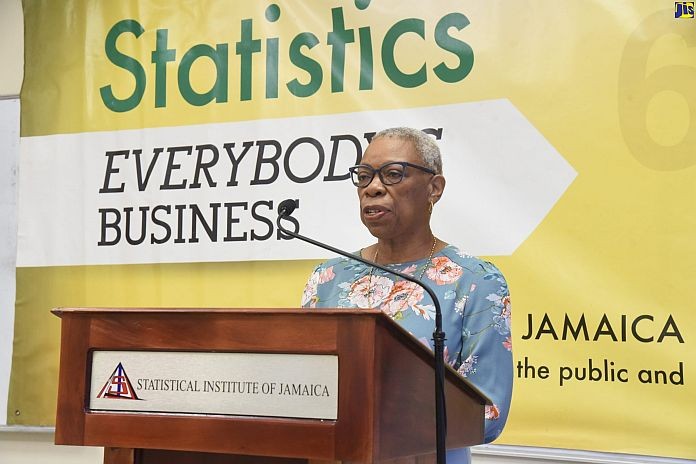KINGSTON, Jamaica, (JIS) – The Statistical Institute of Jamaica (STATIN) is reporting that the economy grew by 4.8 percent over the April to June 2022 quarter, compared to the corresponding period in 2021.
This was attributed to a 7.2 percent increase in the Services Industries, despite a two per cent decline in the Goods Producing Industries.
The details were provided by STATIN’s director-general, Carol Coy, during the Institute’s virtual quarterly media briefing on Tuesda, October 18.
Coy said the second calendar year quarter out-turn was influenced by the revocation of the Disaster Risk Management Order, the expiration of the COVID-19 pretest requirement for travel to Jamaica, and the entertainment sector’s reopening.
“When compared to the first quarter of 2022, that is January to March, total value added… increased by 1.3 percent, a continuation of the trend observed since the third quarter of 2020,” she said.
The growth in the services industries was spurred by improvements in all eight subsectors, led by ‘hotels and restaurants’, up 56 percent.
Coy said growth in this subsector was driven by a 79.2 percent increase in foreign national arrivals during the review period.
The ‘wholesale and retail trade, repairs, installation of machinery and equipment’ subsector grew by 7.6 percent, while ‘transport, storage and communication’ rose by 5.7 percent.
The ‘other services’ subsector, which includes entertainment and tourism-related activities, grew by 9.8 percent; ‘finance and insurance services’ climbed by 1.1 percent; ‘real estate, renting and business activities’ increased by 2.1 percent; ‘producers of government services’ was up 0.4 pe cent, with ‘electricity and water supply’ going up by two percent.
Coy said the decline in the Goods Producing Industries was largely due to lower outputs in ‘mining and quarrying’, which contracted by 62.5 percent, and ‘construction’, down 5.2 percent.
“The continued closure of the JAMALCO (Jamaica Aluminium Company) plant adversely affected the performance of the mining and quarrying industry,” she stated.
Coy pointed out, however, that there were increases in ‘agriculture, forestry and fishing’, and ‘manufacturing’, which grew by 6.3 percent and 5.6 percent, respectively.





